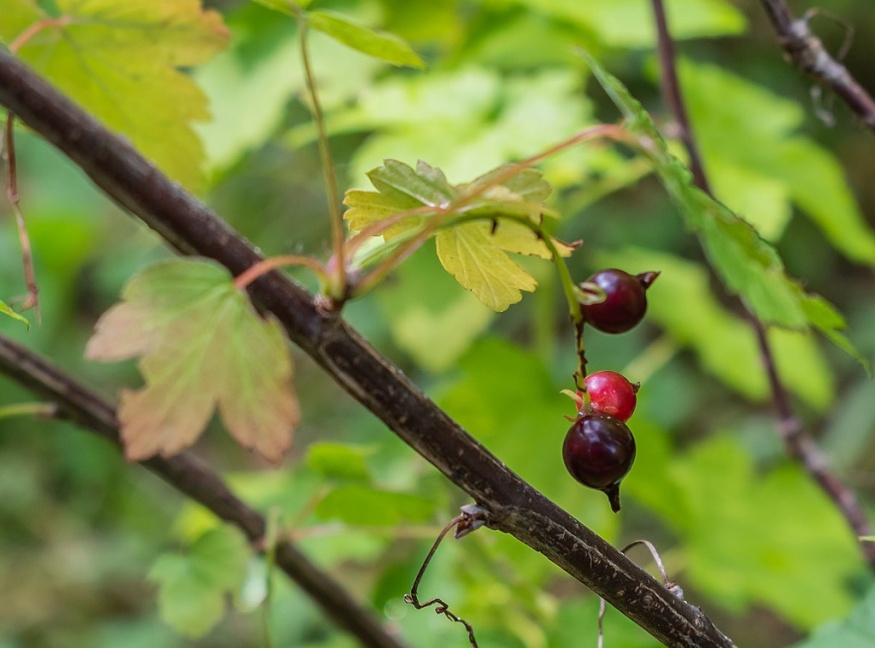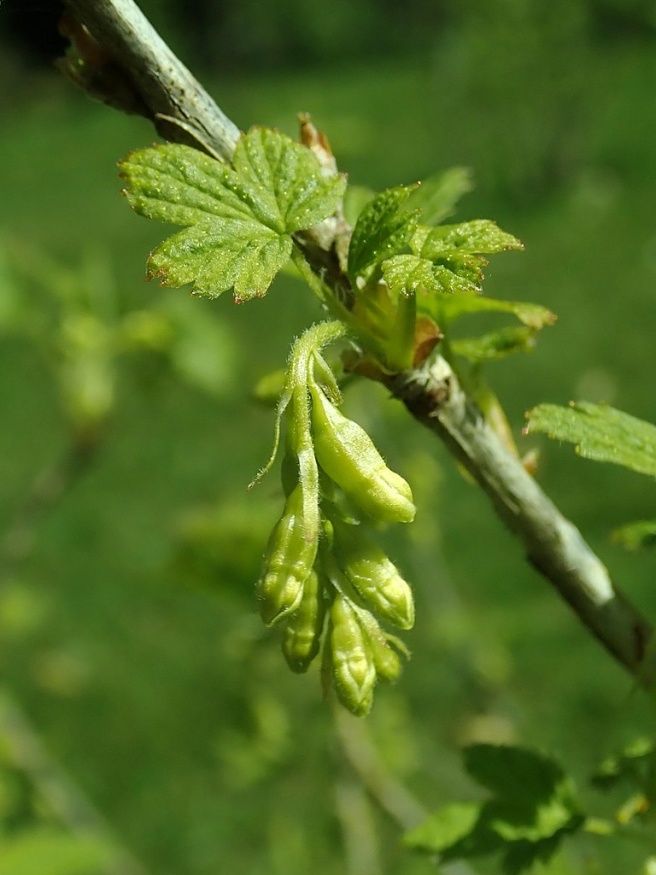American Black Currant

Other Names: cranberry, large cranberry
Other Botanical Names: Oxycoccus macrocarpus
Family: Ericaceae Native to: Eastern North America, Western North America
Hardy to zone: 3
Eco benefits: attracts pollinators, attracts birds, edible fruit
Natural habitat: swamps & bogs, floodplains
Shapes: prostrate, vine
width: 3-4ft
Unique attractions: flowers, fruit
Common uses: naturalized plantings, ground cover
Insects: cranberry blossomworm, cranberry tipworm, cranberry weevil, cranberry fruitworm
Diseases: root rot, fruit end rot, red leaf spot
Light: full sun, partial shade
Transplanting: difficult
Soil: moist and fertile, well drained, tolerates wet feet, acid ph, wet, sandy
Reproduction type: monoacious
American black currant is and upright fruiting shrub native to Moist woods, floodplains, and wet sites of North America. It belongs to the gooseberry family which is now Grossulariaceae due to DNA findings.
-298.jpg)
Pale brown twigs with golden coloured glands hold its long hairy leaf stalks. Older stems are ridged from leaf scars and mature bark is smooth, reddish brown, and without thorns. Leaves are grape-like with prominent veins, toothed margins, and orange resinous glands underneath.

Druping Clusteds of Showy yellow-green flowers can be seen in early spring. Many types of bees, hummingbirds, butterflies, and moths visit the flowers for nectar. Edible dark purple to black berries follow and hang in chained clusters of 6 to 15 in mid summer. Numerous seeds are found within them. Many birds and wildlife eat the fruit and it can be eaten by humans as well. The berries can be prepared fresh, dried, as jams or jellies, but are not as palatable as other currants and gooseberries. A tea from the roots was used by native Americans to treat kidneys and remedy intestinal worms.
American black currant is the alternate host for white pine blister rust (along with other species of Ribes). Consequently, the shrub has been eradicated from part of it's range in order to protect white pine trees (important for the lumber industry) from the disease.
References
Agroforestry & Woodlot Extension Society. (n.d.). Wild black currant. Retrieved from https://www.awes-ab.ca/species/wild-black-currant/
Alberta Biodiversity Monitoring Institute. (2016). Wild Black Currant. Retrieved from https://www.abmi.ca/home/data-analytics/biobrowser-home/species-profile?year=2016&tsn=99005195
The Morton Arboretum. (n.d.). American black currant. Retrieved from https://www.mortonarb.org/trees-plants/tree-plant-descriptions/american-black-currant
MDC. (n.d.) American Black Currant. Retrieved from https://nature.mdc.mo.gov/discover-nature/field-guide/american-black-currant